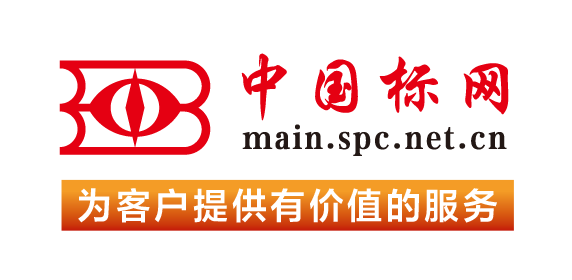【国外标准】 Standard Test Method for Compressive Properties of Plastic Lumber and Shapes
本网站 发布时间:
2024-02-28
开通会员免费在线看70000余条国内标准,赠送文本下载次数,单本最低仅合13.3元!还可享标准出版进度查询、定制跟踪推送、标准查新等超多特权!
查看详情>>
适用范围:
4.1 Compression tests provide information about the compressive properties of plastic lumber and shapes when these products are used under conditions approximating those under which the tests are made. In the case of some materials, there will be a specification that requires the use of this test method, but with some procedural modifications that take precedence when adhering to the specification. Therefore, it is advisable to refer to that material specification before using this test method. Table 1 in Classification D4000 lists the ASTM materials standards that currently exist.4.2 Compressive properties include modulus of elasticity, secant modulus, compressive strength, and stress at a given strain. In the case of a material that fails in compression by a shattering fracture, the compressive strength has a very definite value. In the case of a material that does not fail in compression by a shattering fracture nor exhibits a compressive yield point, the compressive strength is an arbitrary one depending upon the degree of distortion that is regarded as indicating complete failure. Many plastic lumber materials will not exhibit a true yield point. Compressive strength can have no real meaning in such cases. For plastic lumber, the stress at a given strain of 3 % (0.03 in./in. (mm/mm)) is typically used.4.3 Compression tests provide a standard method of obtaining data for research and development, quality control, acceptance or rejection under specifications, and special purposes. The tests cannot be considered significant for engineering design in applications differing widely from the load-time scale of the standard test. Such applications require additional tests such as impact, creep, and fatigue.1.1 This test method covers the determination of the mechanical properties of plastic lumber and shapes, when the entire cross-section is loaded in compression at relatively low uniform rates of straining or loading. Test specimens in the “as-manufactured” form are employed. As such, this is a test method for evaluating the properties of plastic lumber or shapes as a product and not a material property test method.1.2 Plastic lumber and plastic shapes are currently made predominantly with recycled plastics. However, this test method would also be applicable to similar manufactured plastic products made from virgin resins, or where the product is non-homogenous in the cross-section.1.3 The values stated in inch-pound units are to be regarded as the standard. The values given in parentheses are for information only.1.4 This standard does not purport to address all of the safety concerns, if any, associated with its use. It is the responsibility of the user of this standard to establish appropriate safety, health, and environmental practices and determine the applicability of regulatory limitations prior to use.NOTE 1: There is no known ISO equivalent to this test method.1.5 This international standard was developed in accordance with internationally recognized principles on standardization established in the Decision on Principles for the Development of International Standards, Guides and Recommendations issued by the World Trade Organization Technical Barriers to Trade (TBT) Committee.
标准号:
ASTM D6108-19
标准名称:
Standard Test Method for Compressive Properties of Plastic Lumber and Shapes
英文名称:
Standard Test Method for Compressive Properties of Plastic Lumber and Shapes标准状态:
Active-
发布日期:
-
实施日期:
出版语种:
- 推荐标准
- ASTM 51401-21 Standard Practice for Use of a Dichromate Dosimetry System
- ASTM 51956-21 Standard Practice for Use of a Thermoluminescence-Dosimetry System (TLD System) for Radiation Processing
- ASTM A1010/A1010M-24 Standard Specification for Higher-Strength Martensitic Stainless Steel Plate, Sheet, and Strip
- ASTM A1016/A1016M-24 Standard Specification for General Requirements for Ferritic Alloy Steel, Austenitic Alloy Steel, and Stainless Steel Tubes
- ASTM A105/A105M-24 Standard Specification for Carbon Steel Forgings for Piping Applications
- ASTM A1064/A1064M-24 Standard Specification for Carbon-Steel Wire and Welded Wire Reinforcement, Plain and Deformed, for Concrete
- ASTM A108-24 Standard Specification for Steel Bar, Carbon and Alloy, Cold-Finished
- ASTM A1080/A1080M-24 Standard Practice for Hot Isostatic Pressing of Steel, Stainless Steel, and Related Alloy Castings
- ASTM A1090/A1090M-19(2024) Standard Specification for Forged Rings and Hollows for Use as Base Plates in Power Transmission Structures
- ASTM A1115/A1115M-24 Standard Practice for Construction of Mechanically Stabilized Earth Walls with Inextensible Soil Reinforcement
- ASTM A1128-24 Standard Specification for Stainless Steel Shielded, Rubber Gasketed Couplings Having an Integral Restraint Feature for Joining Hubless Cast Iron Soil Pipes and Fittings Where External Restraint Is Required
- ASTM A179/A179M-24 Standard Specification for Seamless Cold-Drawn Low-Carbon Steel Heat-Exchanger and Condenser Tubes
- ASTM A234/A234M-24 Standard Specification for Piping Fittings of Wrought Carbon Steel and Alloy Steel for Moderate and High Temperature Service
- ASTM A242/A242M-24 Standard Specification for High-Strength Low-Alloy Structural Steel
- ASTM A249/A249M-24a Standard Specification for Welded Austenitic Steel Boiler, Superheater, Heat-Exchanger, and Condenser Tubes
 我的标准
我的标准 购物车
购物车 400-168-0010
400-168-0010














